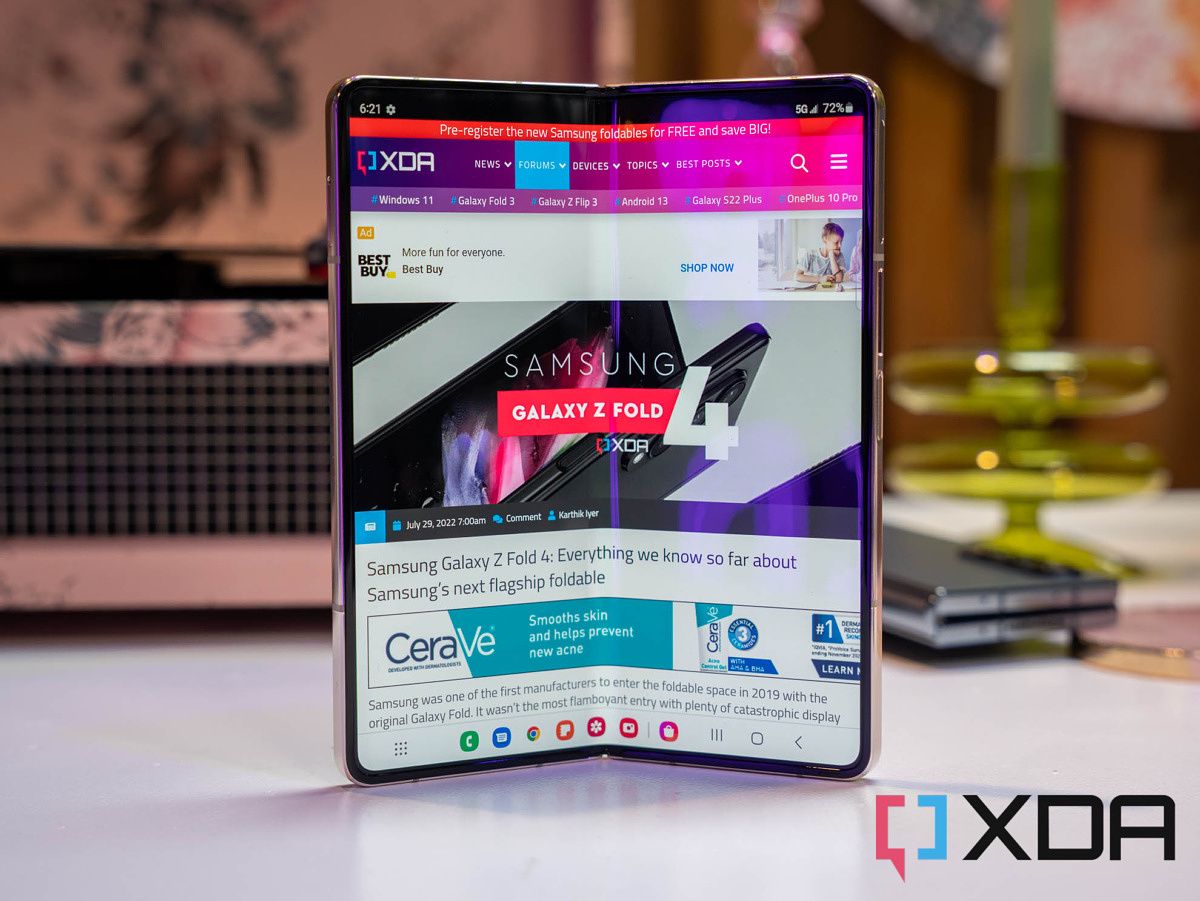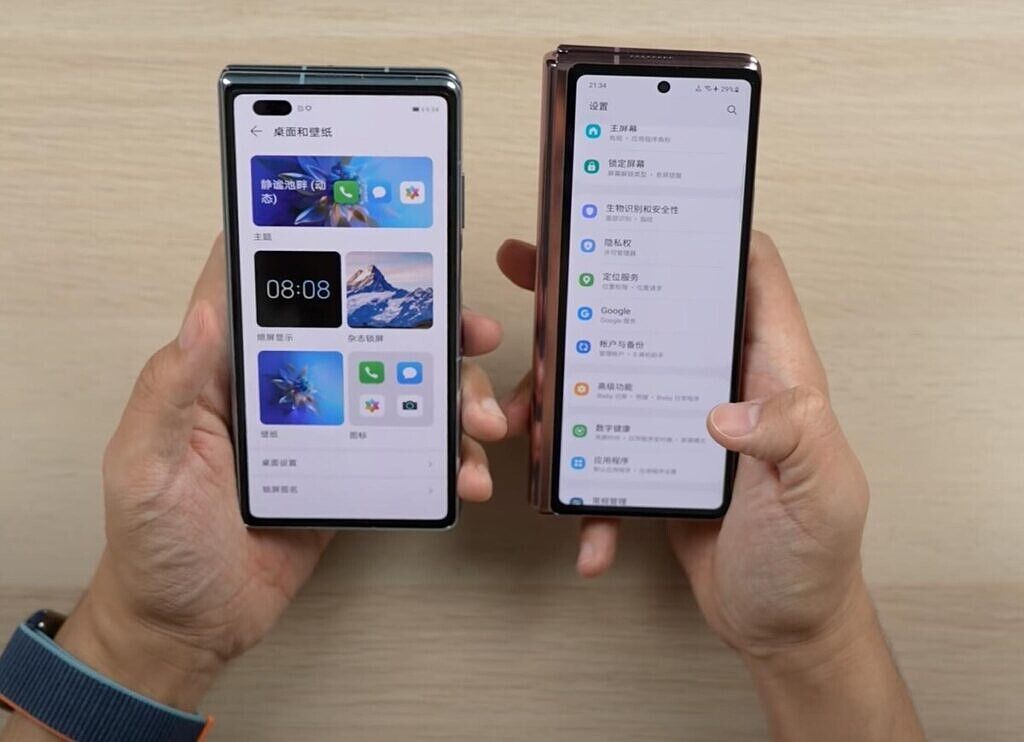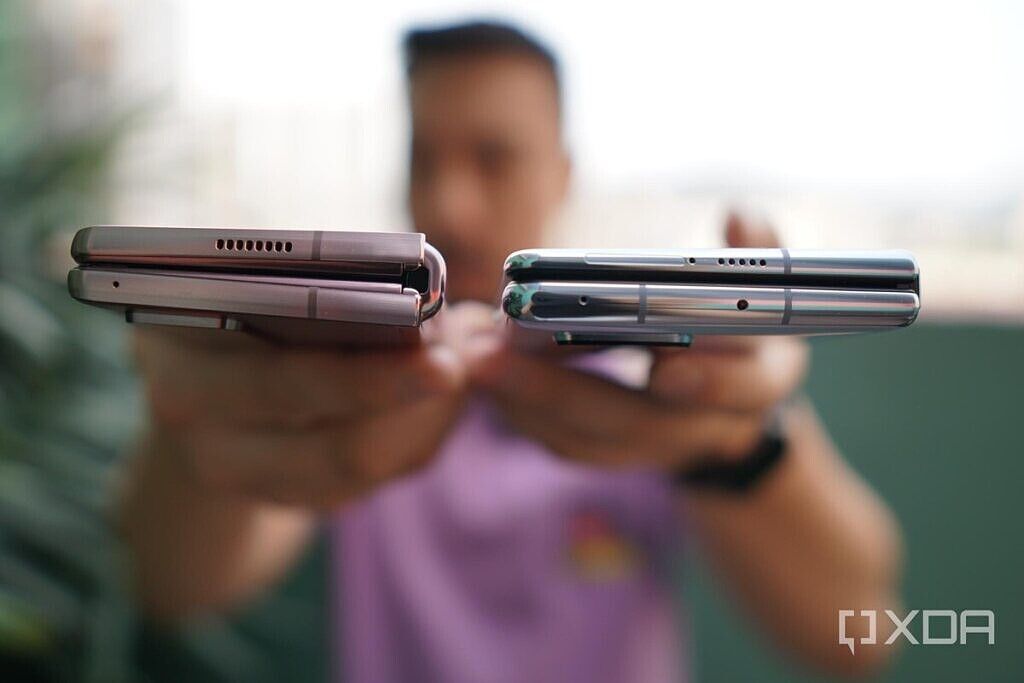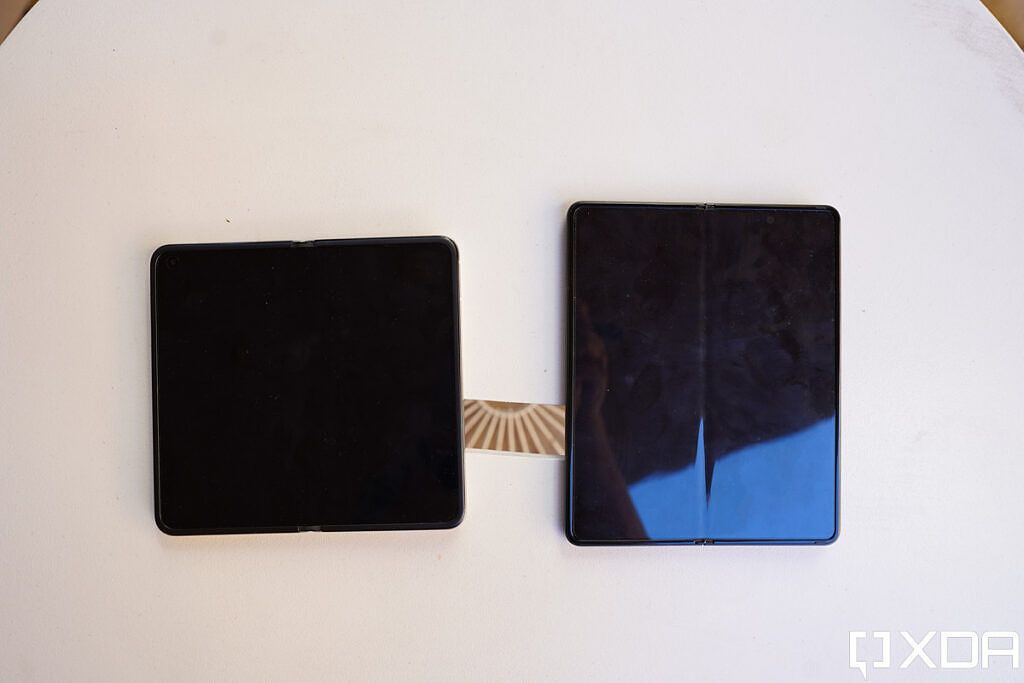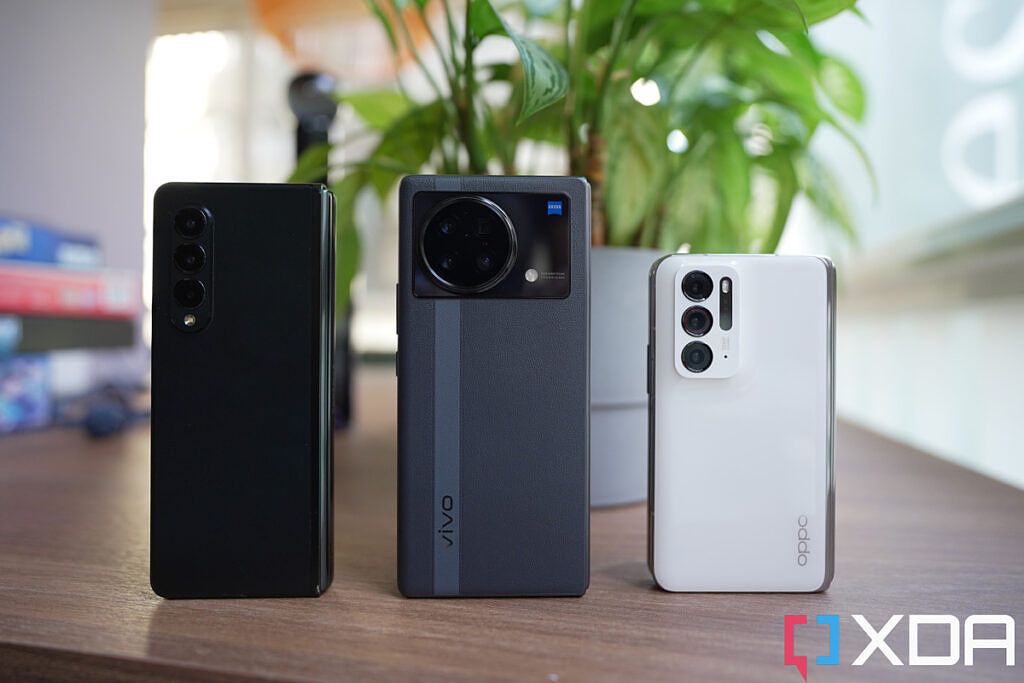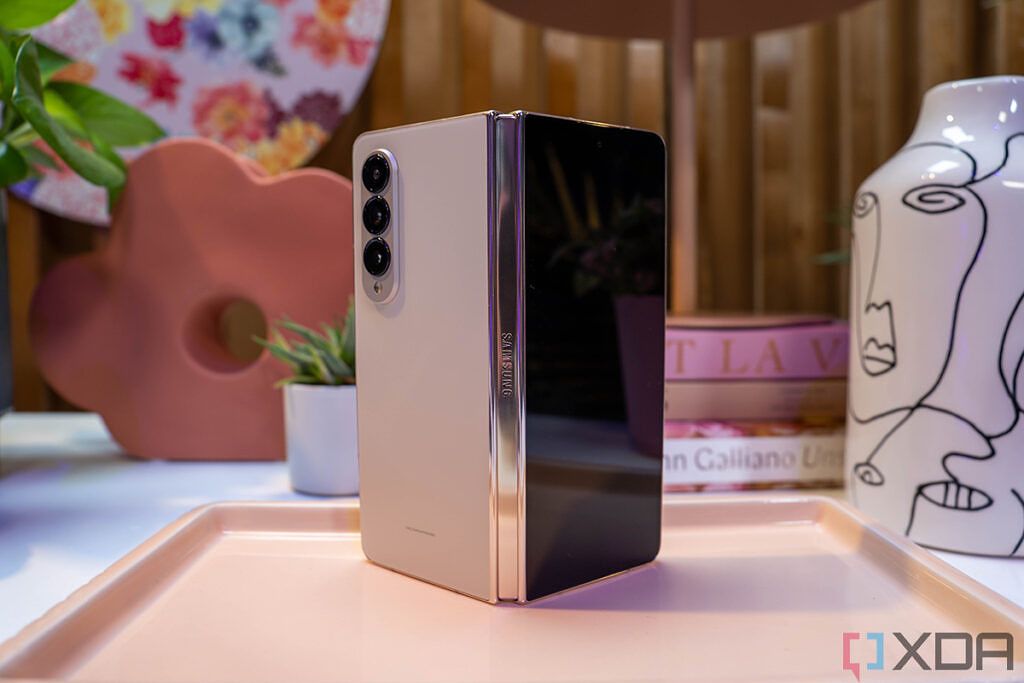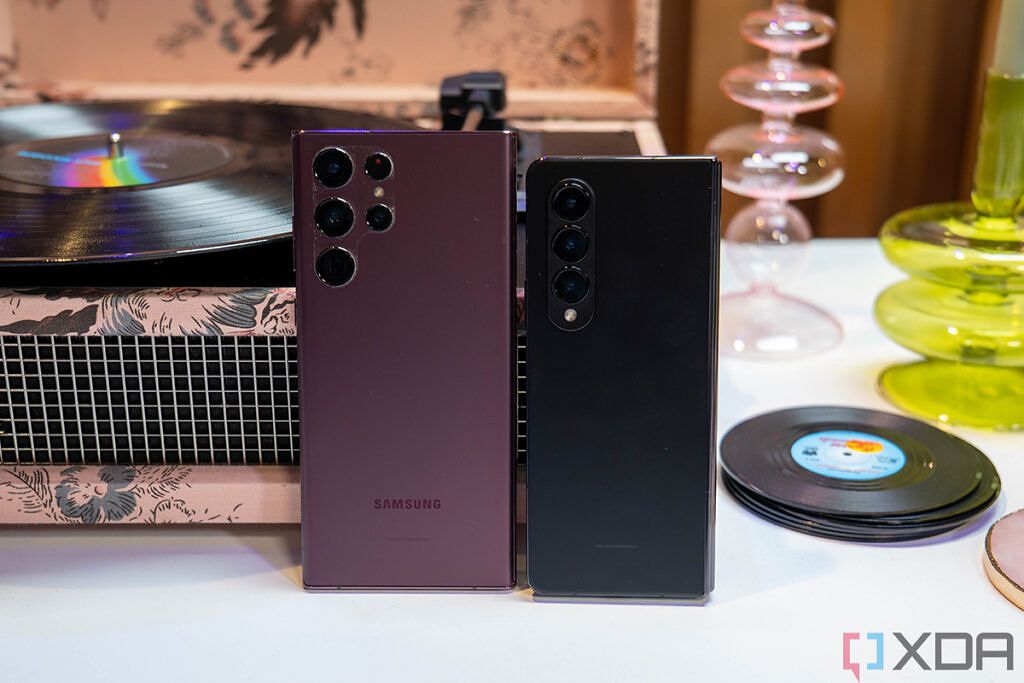Samsung is the pioneer of foldable phones, and its inner folding design language laid the path on which all other Chinese foldables have followed. But a good case can be made that, in the last couple of years, foldables from brands like Huawei, Oppo, and Vivo have surpassed the Galaxy Z Fold series in pure hardware prowess. For example, the most prominent design improvement Samsung gave to the Galaxy Z Fold 4 this year is an improved hinge that no longer protrudes from the side as much in folded form. This drastically improves the in-hand feel, as the folded Fold 4 now feels more symmetrical in the hand, without a clear bulkier left side like in years past.
But this flatter hinge structure is not new. It was first seen in the 17-month-old Huawei Mate X2, and the Oppo Find N, Honor Magic V, and Vivo X Fold have since hit the market with a similar hinge. The Galaxy Z Fold 4 is merely playing catch up in this particular area.
While Samsung has introduced genuine hardware breakthroughs in foldable tech last year like official IP water resistance rating and stylus support, the company has also not addressed some glaring hardware flaws that have been the butt of jokes, like the hard screen crease and the fact the Fold still cannot fold entirely flat. These problems have long been solved in the Chinese foldable space.
Samsung fans can argue that the Z Fold series is still the best overall foldable with the most polished software (and I'd agree with you!). But objectively speaking, a Galaxy Z Fold screen with a harsh crease is just not as nice to look at as recent Chinese foldable screens.
And then there's the Z Fold camera system: the first three Galaxy Z Fold phones had modest camera hardware that were several tiers below Samsung's actual best camera offerings seen in its Ultra phones. No high megapixel count, no large sensor, and just a mediocre 2X zoom lens. The Z Fold 4 improves matters by upgrading to the Galaxy S22's camera system, with a 50MP main camera with a larger 1/1.56-inch image sensor, and a functional 3X telephoto zoom lens.
This system, however, is still a level below the Galaxy S22 Ultra camera system; it also still lags behind the optics seen in the Huawei Mate X2 or Vivo X Fold, which packed a periscope zoom lens and main cameras that were on par with each brands' best possible camera hardware at the time. If you have time, check out my Vivo X Fold review and see the photo samples vs the Galaxy Z Fold 3, Vivo's camera system is objectively superior.
But here's the thing: I don't think the Galaxy Z Fold series' more modest hardware is due to a lack of technical ability on Samsung's part. If Vivo engineers can cram a Periscope zoom lens and in-display fingerprint reader into a foldable, surely Samsung engineers can too.
Instead, I think Samsung is choosing not to pursue those things, because it would rather make the Fold series lighter and more affordable.
Samsung confirmed this direction two years ago when company representatives told South Korean news outlet The Elec that its goal is to make foldable phones "more mainstream" by going "lighter and thinner." And Samsung is accomplishing this, the Galaxy Z Fold 3 was thinner and lighter than the Fold 2, and the Fold 4 further sheds weight from the Fold 3. Samsung also managed to lower the retail price of the Fold series these last two years. And while the price hasn't changed this year, understand that the global economy and factors of production are not the same as last year, so that static price will very likely be translating into lowered net profit.
Most consumers don't need 10X zoom cameras. They'd rather have a lighter and cheaper phone
To focus on going mainstream is a very wise business move on Samsung's part. While phone enthusiasts like me may be disappointed by the lack of new hardware push, the reality is that I am in the minority. Most consumers don't need 10X zoom cameras. They'd rather have a lighter and cheaper phone.
Had Samsung put the Ultra camera system into the Fold 4, and pursued other breakthroughs like in-display fingerprint readers and perhaps a crease-less screen, it surely would have driven the price and weight up. Samsung decided not to do that in pursuit of mainstream consumers. It will probably succeed, with so many good deals for the Z Fold 4, the phone should sell quite well.
However, once Samsung has successfully made the foldable more mainstream (and it is well on its way: I am seeing far more Fold and Flips in 2022 than ever before), Samsung should consider making an Ultra version of the Fold, one that appeals to the enthusiasts like me who want the absolute best. This wouldn't be any different from its current flagship slab phone strategy: Samsung makes three Galaxy phones a year, with the Ultra model clearly aimed at power users and enthusiasts, while the non-Ultra models are aimed at more casual consumers.
Samsung could release a Galaxy Z Fold 5 next year that continues the current trend, but also give us a Galaxy Z Fold 5 Ultra with all the latest bleeding-edge tech
Why not do this with the Fold? Samsung could release a Galaxy Z Fold 5 next year that continues this current direction of focusing on shedding weight and size. Maybe Samsung could even consider using a lower-tier Snapdragon 7 series SoC to get the pricing down by another couple hundred dollars.
At the same time, Samsung can push forward a Galaxy Z Fold 5 Ultra, one with Samsung's best possible camera system, a superior crease-less display with an in-display scanner, and whatever breakthroughs Samsung may be working on. Heck, cram an integrated S-Pen in there. Sure, the phone would probably cost $2,500 and weigh north of 280g, but enthusiasts would buy it. I know I would.
Of course, the standard Fold model would outsell the Ultra model by a big margin, but this is already usually the case with most flagship smartphone series. The iPhone 13 far outsells the iPhone 13 Pro Max, and the Galaxy S21 outsold the Galaxy S21 Ultra. That's how the pricing economics usually plays out, and companies are fully cognizant of these dynamics.
The only exception? This year's Galaxy S22 Ultra became the only top-tier flagship phone to outsell a lower-tier variant in recent memory. Perhaps this is a sign to Samsung that its fans want an Ultra phone with all the latest tech breakthroughs. For now, Samsung's Galaxy Z Fold 4 is looking like a really appealing mainstream foldable for the masses.
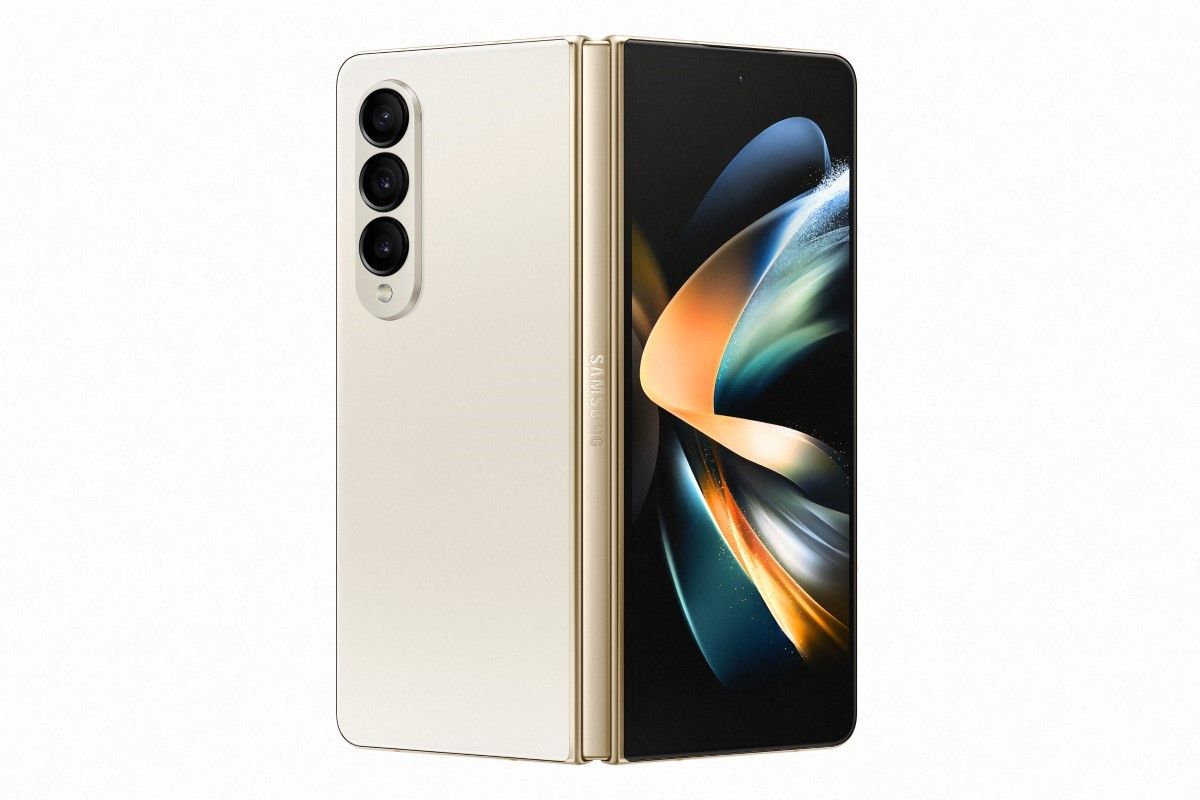
Samsung Galaxy Z Fold 4
The fourth generation of Samsung's flagship folding phone, the Galaxy Z Fold 4, brings subtle improvements that add up for a much more polished premium foldable.

